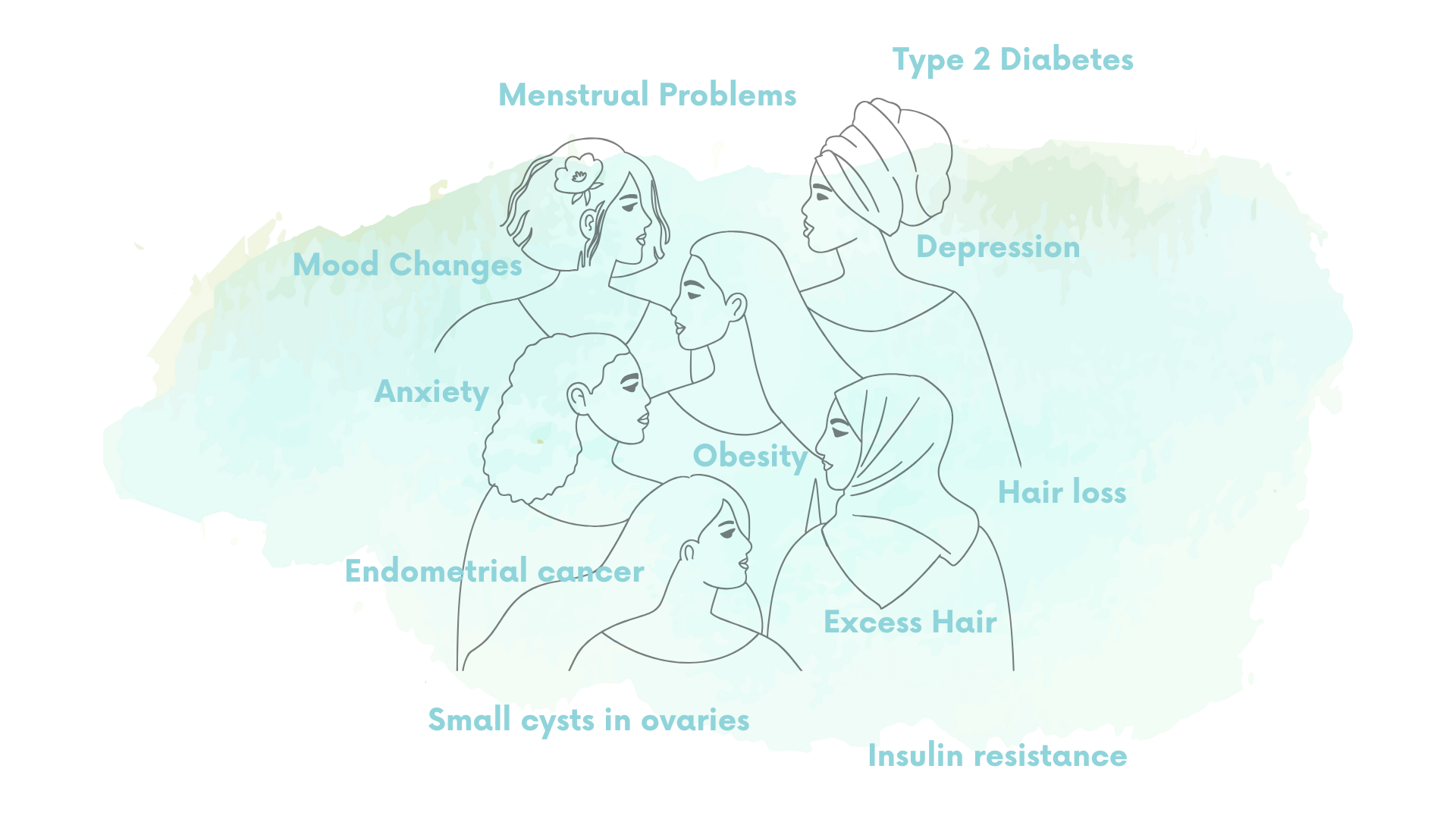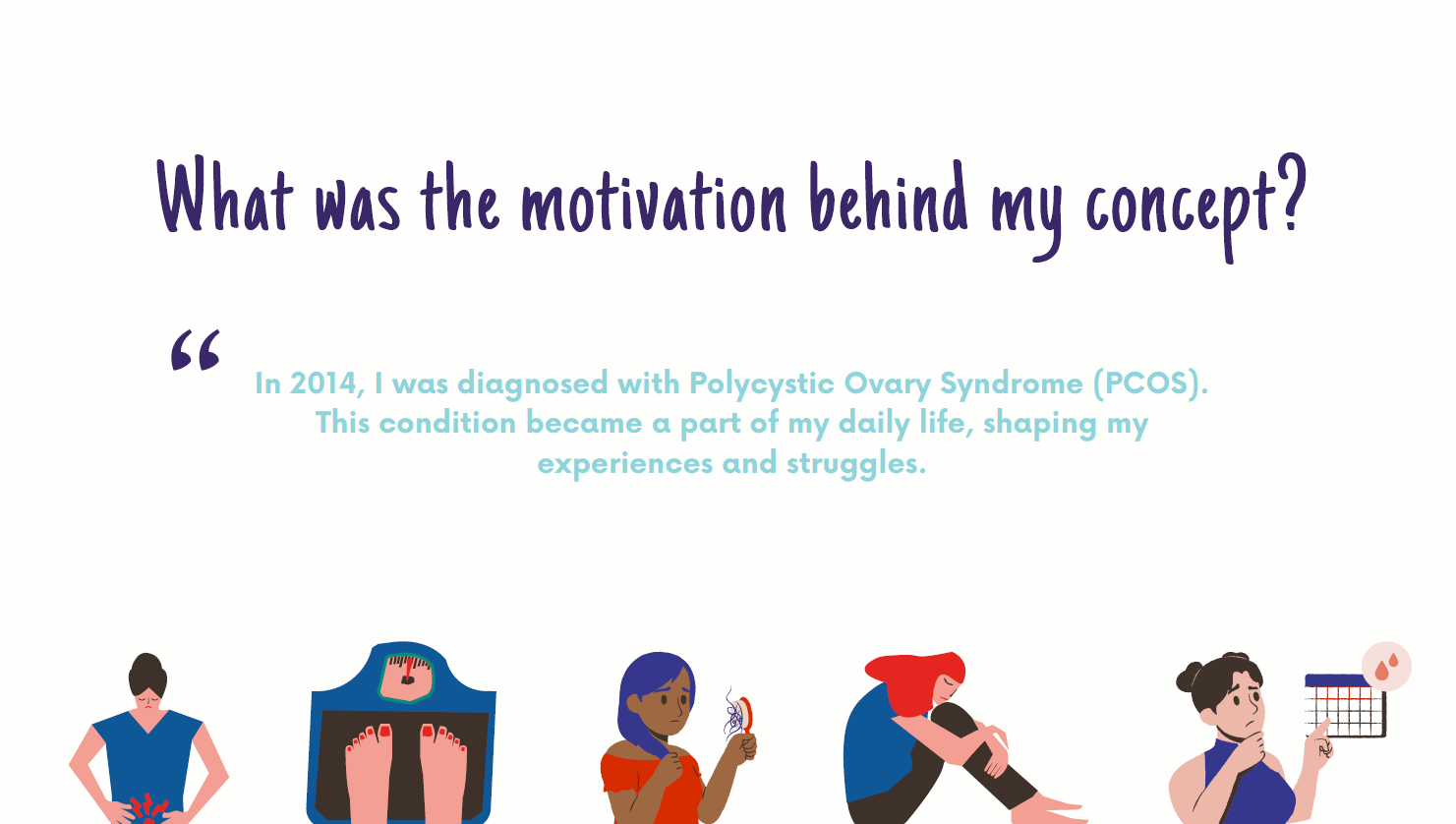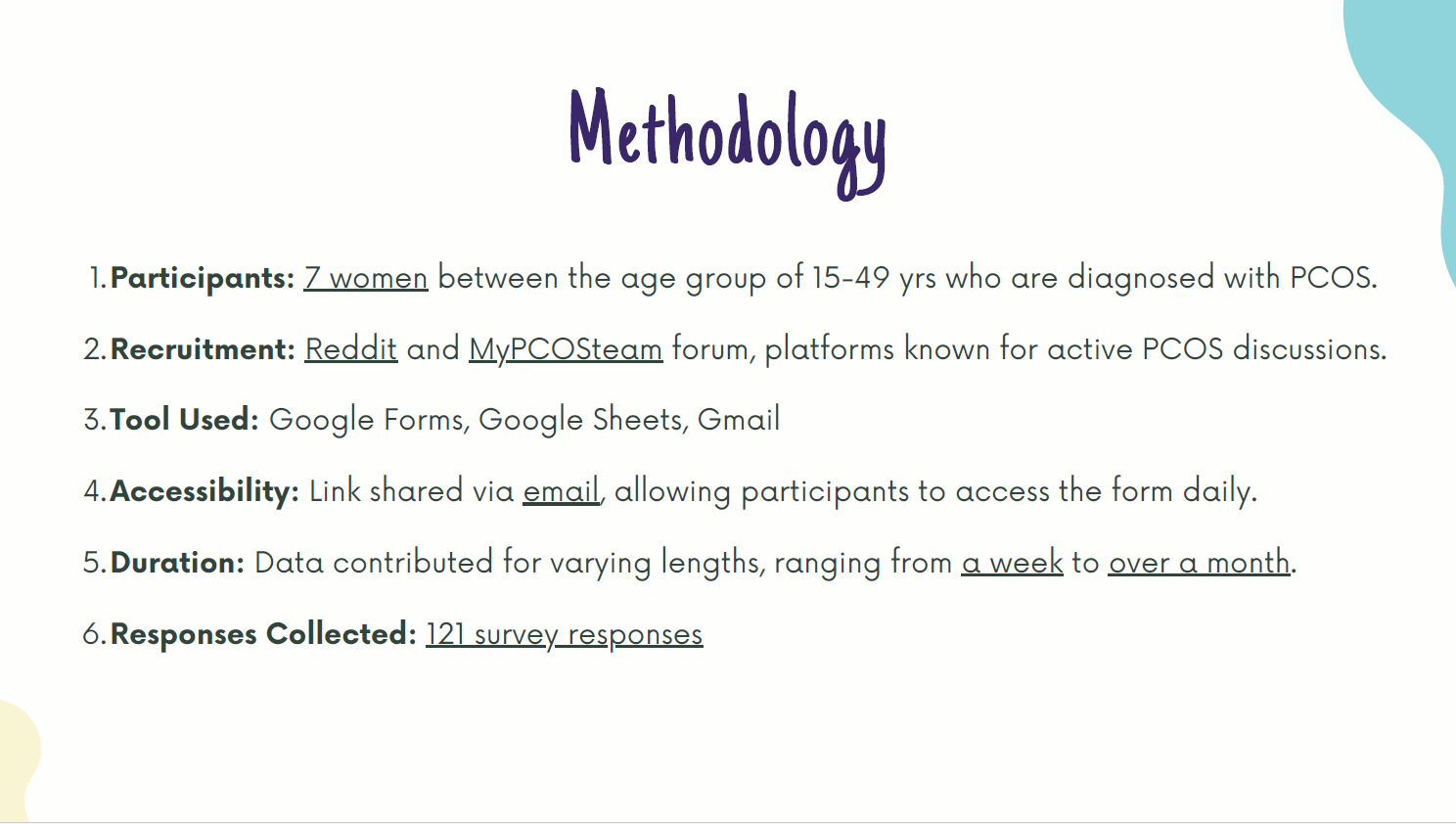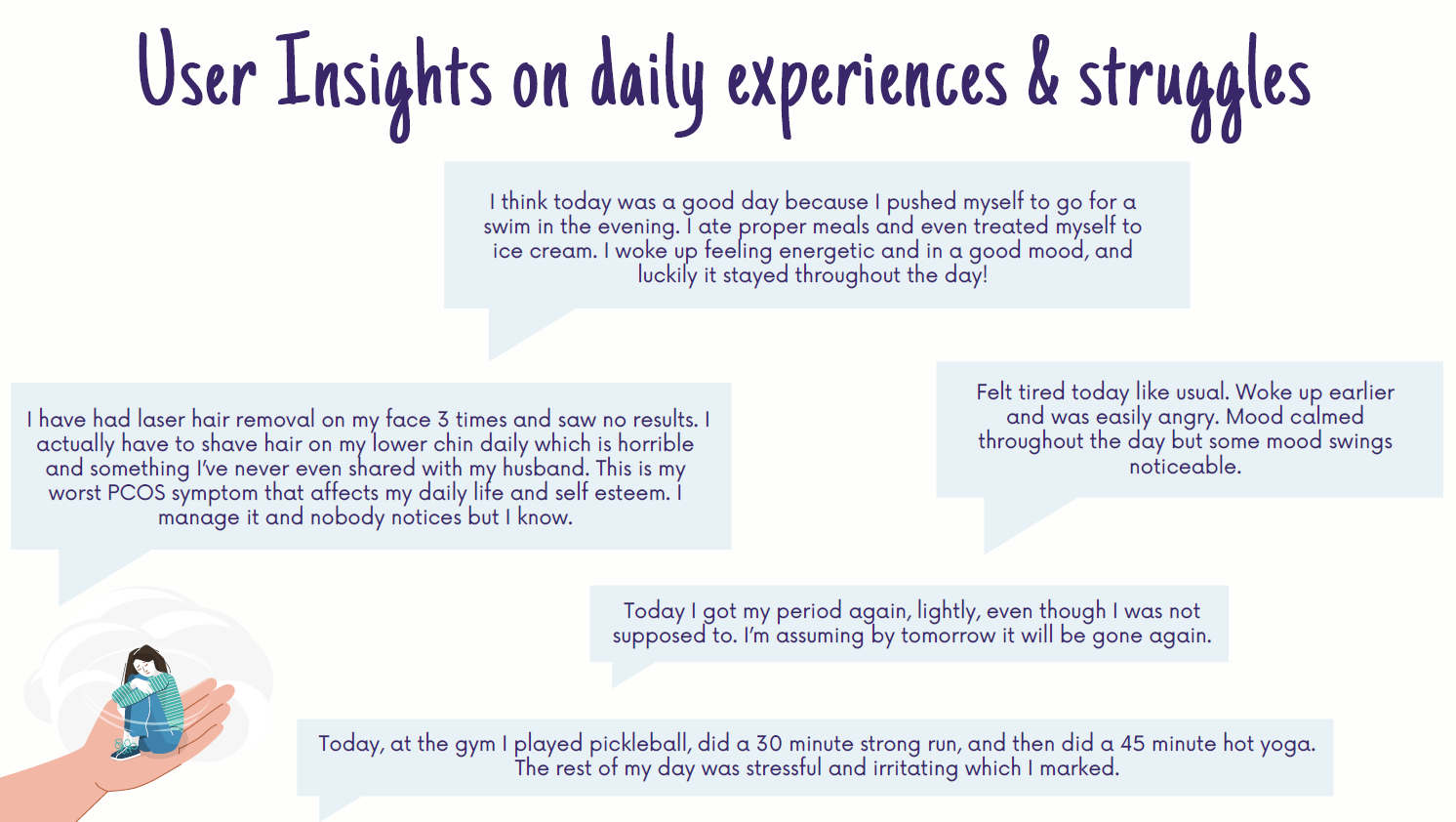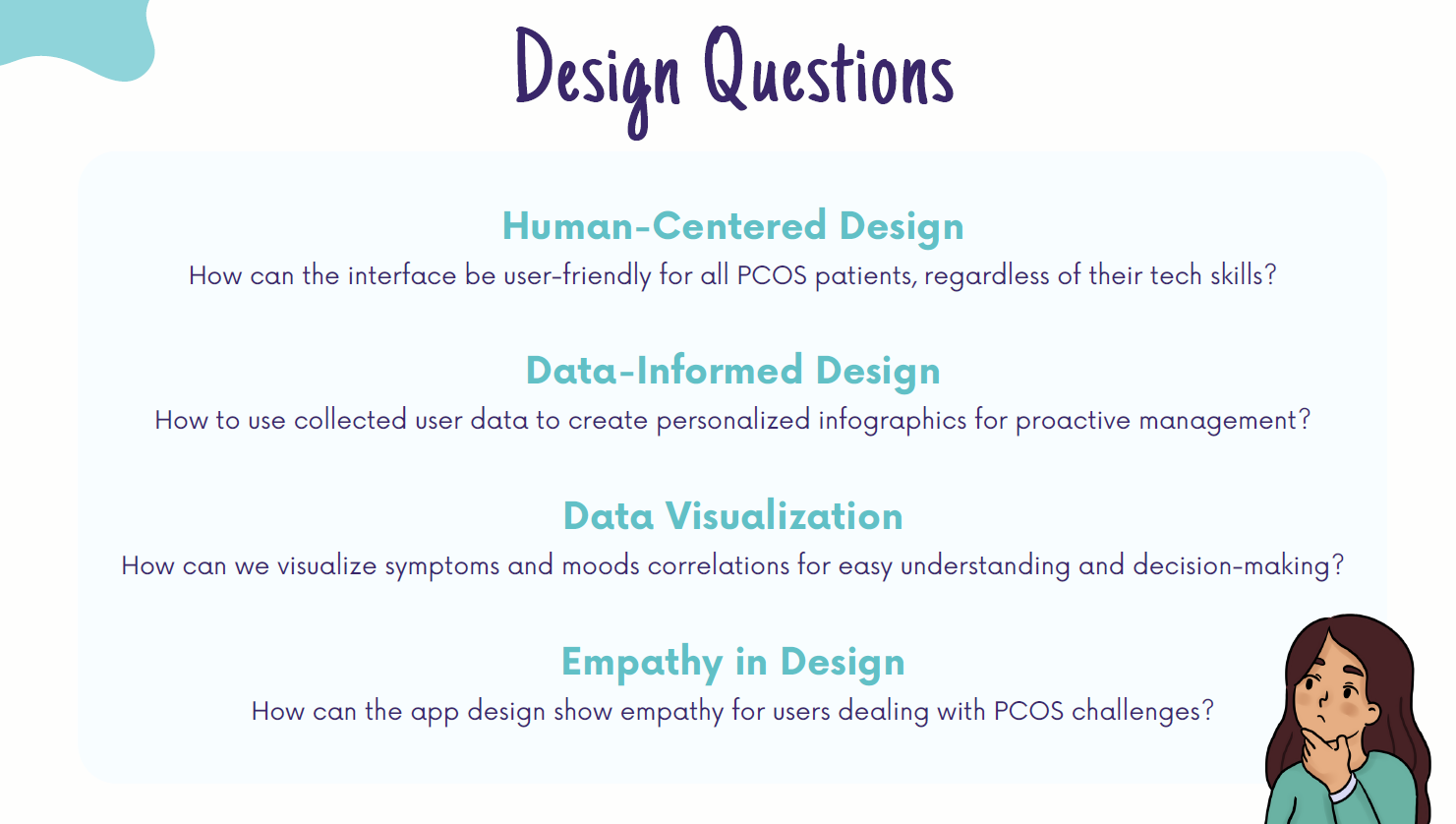What is PCOS?
PCOS is a serious genetic, hormone, metabolic, and reproductive disorder affecting women. It is the leading cause of female infertility and can lead to various other complications.
CONCEPT
RESEARCH
Conducted a month-long survey with 7 women diagnosed with PCOS, collecting 121 data points on symptoms, moods, and management strategies. Insights revealed patterns and emotional triggers often missed by traditional tracking apps.
DESIGN
Tested interactive prototypes with users across four rounds. Feedback led to key changes: combining redundant calendar views, refining color meanings, and streamlining daily inputs to minimize friction and enhance engagement.
Developed a high-fidelity prototype showcasing symptom tracking, daily cycle logs, and dynamic insights. Visualized how user-generated data can be transformed into actionable, personalized health patterns.
DEVELOPMENT
The development phase of PCOSxBonds marked a major leap from concept to code. I used Android Studio and built the app using Kotlin, integrating my designs from Figma into a functioning interface. The goal was to create a seamless, user-friendly experience while visually presenting symptom correlations in a way that feels both intuitive and empowering.
I focused on implementing:
Custom calendar views for cycle tracking
Multi-selection checkboxes for symptoms
Radio buttons for mood inputs
Data visualization screens to show meaningful patterns between moods, symptoms, and cycles
Despite limited engineering experience, I pushed through the steep learning curve of Kotlin, debugging errors while experimenting with layout behavior and interactive elements. I reached about 60% functionality, with all primary features partially operational and the UI structure in place.
Despite limited engineering experience, I pushed through the steep learning curve of Kotlin, debugging errors while experimenting with layout behavior and interactive elements. I reached about 60% functionality, with all primary features partially operational and the UI structure in place.
This phase was hands-on, technical, and humbling—challenging me to problem-solve in real-time and blend design intentions with development constraints. It also reinforced the importance of design-developer alignment, especially for health-focused tools where clarity, performance, and empathy must co-exist.
What’s Next
Finalize remaining features
Add smooth transitions and animations
Conduct usability testing with real users
The development process pushed me outside my comfort zone and deepened my appreciation for how design and code come together. I’m excited to keep building and refining PCOSxBonds into a tool that can genuinely help users take control of their health with confidence and clarity.




